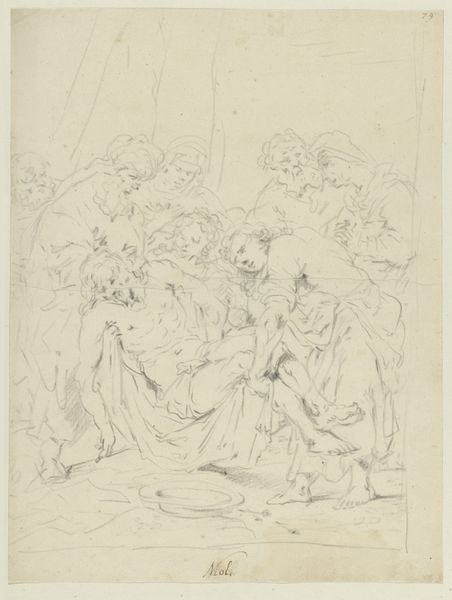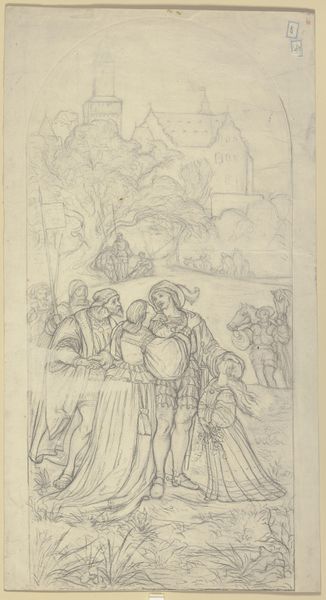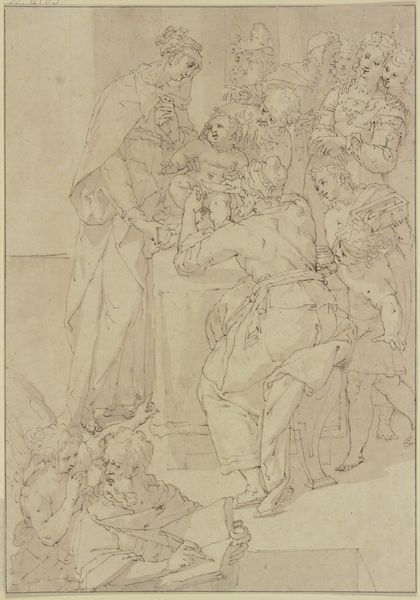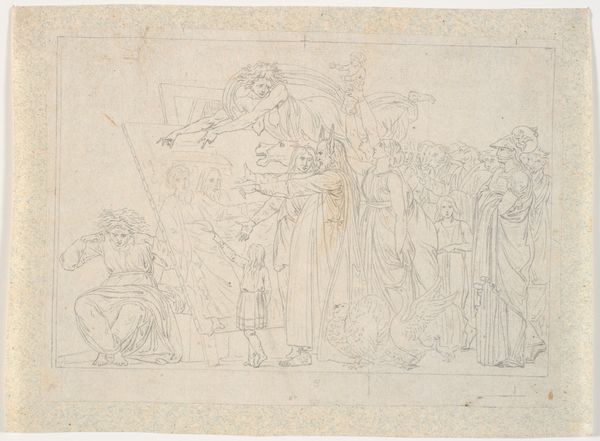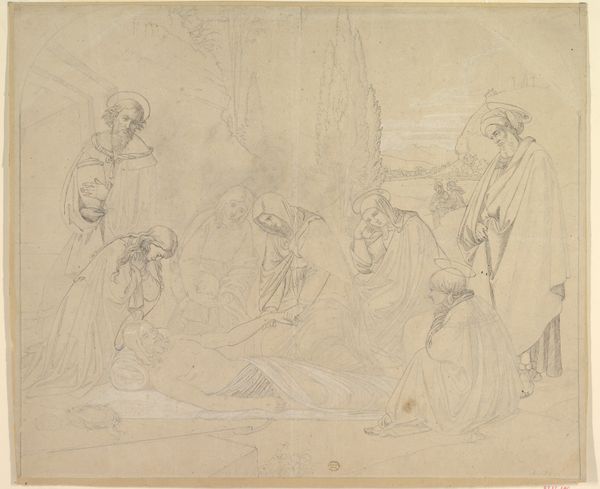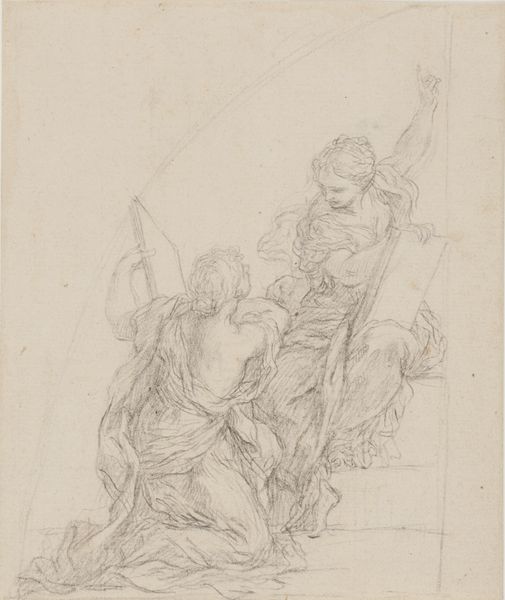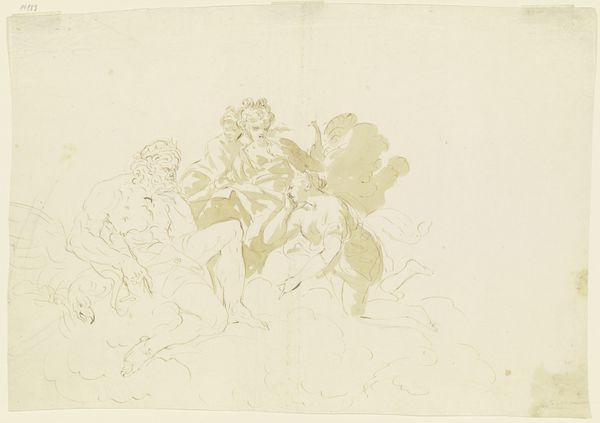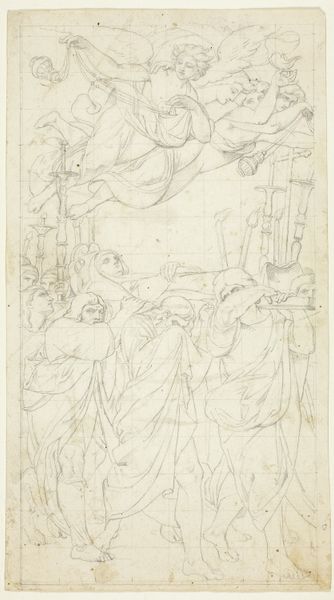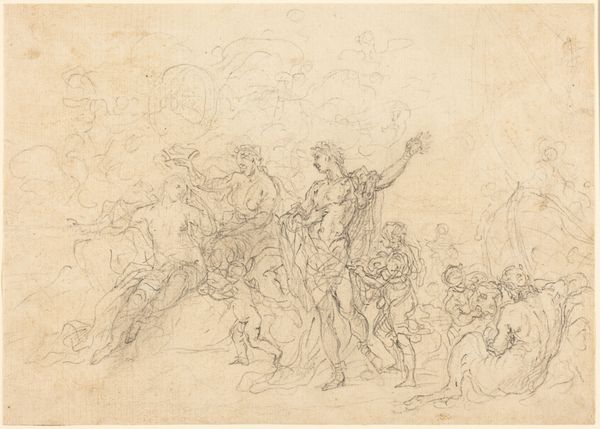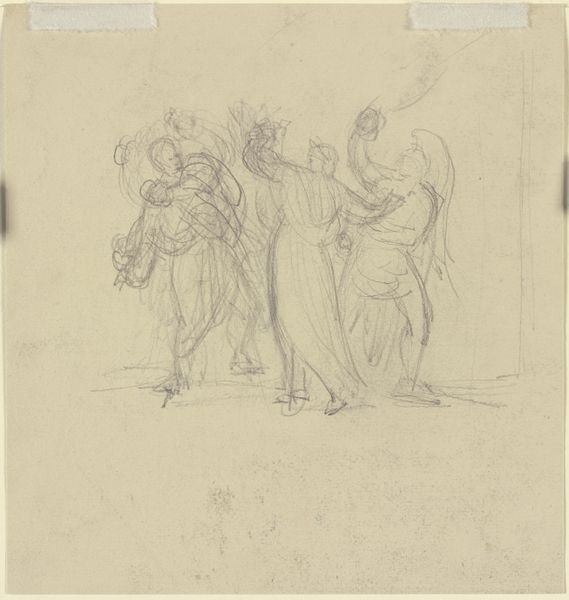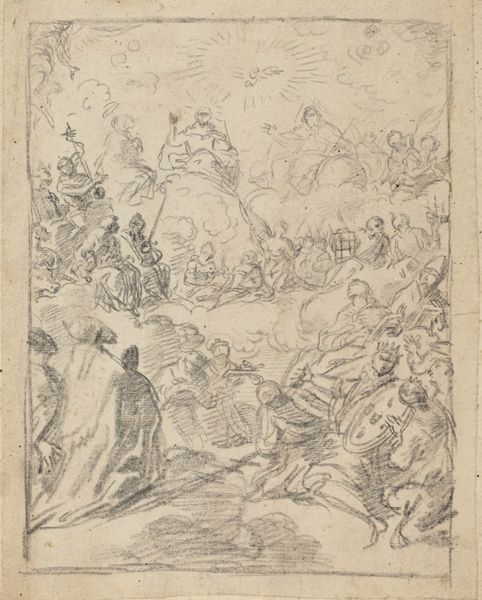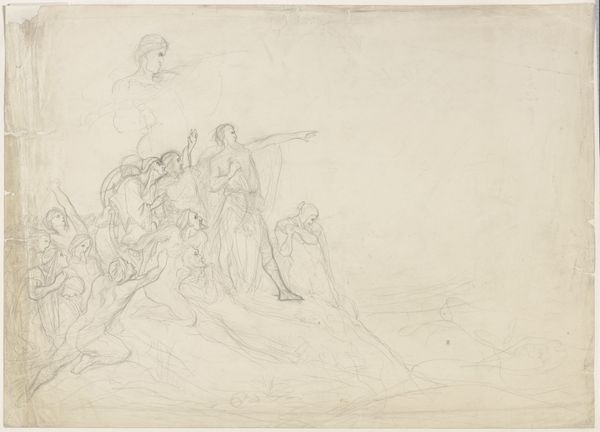
drawing, paper, pencil
#
drawing
#
narrative-art
#
landscape
#
figuration
#
paper
#
romanticism
#
pencil
#
history-painting
#
academic-art
Copyright: Public Domain
Curator: This delicate drawing is entitled "Jacob and Rachel" by Julius Schnorr von Carolsfeld, created around 1820 or 1821. It resides here in the Städel Museum. The piece is crafted with pencil on paper. Editor: It's incredibly subtle. There's a dreamlike quality to it, almost ethereal. The muted tones of the pencil render such intimacy and tenderness. I almost feel like an intruder just observing. Curator: Absolutely. Schnorr von Carolsfeld was a key figure in the Nazarene movement, which sought to revive spiritual values in art. They very consciously modeled themselves after the masters of the early Renaissance, especially when confronting secularisation, such as exploring the intersections between sacred and domestic life. Editor: That’s clearly reflected here, not only in its subject which references biblical figures and stories, but also how their figures almost disappear back into nature through line work and lack of chiaroscuro modeling, but also in a rejection of academic painting standards which are also challenged here. The tenderness represented becomes a model for ethical relationships. What is represented and how, becomes part of a social program to revitalize an ethico-religious world view. Curator: That is interesting; there's an intentional archaism at play. He clearly looked to the past for visual language and inspiration; his integration of the natural landscape around the romantic protagonists suggests his interest in establishing the biblical figures as part of history, situating religious art in a secularized public. The composition itself seems deliberately simple and classic. Editor: Which can also read as restrictive. Who gets to partake in the ethical life? Is that not a conversation about accessibility and power dynamics still very present in artistic practice? It is worth thinking critically not just of the style and intention, but what such forms allow and constrain when it comes to artistic interpretation and engagement. Curator: I see your point; by grounding the spiritual in a deliberately idealized past, there’s a certain sense of exclusion happening as well. Still, I find its tenderness compelling, something to think about. Editor: Absolutely, a worthwhile encounter which encourages critical discussion, that is invaluable!
Comments
No comments
Be the first to comment and join the conversation on the ultimate creative platform.
